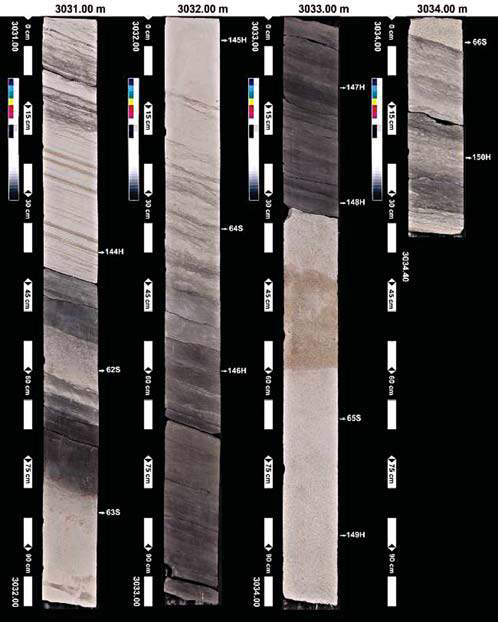Evaluation of water saturation in the low resistivity reservoir of Te Giac Trang field, block 16-1, Cuu Long basin, offshore Vietnam
Tóm tắt
It is well known that there is a series of oil fields in the Cuu Long basin that were discovered in low resistivity Early Miocene sequences, and the Te Giac Trang field is a case that challenges formation evaluation for water saturation of the pay sands in the reservoirs. It is believed that the low resistivity is a result of the effects of many factors such as thin beds, the low degree of sand compaction, the presence of highly conductive minerals (pyrite etc.), and montmorillonite that significantly increases the surface conductivity, sorting of the sand and type of cement.
In the Te Giac Trang field, for the water saturation calculation, an approach was used with the traditional shaly sand model and modified Archie equation constants. The said method combined with the results of pressure pretests allows us to minimise the uncertainty of the estimated water saturation for these low resistivity pay sands.
Các tài liệu tham khảo
Hoang Long JOC. Geological final well reports, Block 16-1, Cuu Long basin. 2006 - 2012.
Mark Deakin Petrophysics. Integrated petrophysics for reservoir characterisation. Petrophysics Pty Ltd Copyright. 2008.
Roger Griffiths, Andrew Carnegie. Evaluation of low resistivity pay in carbonates - A breakthrough. SPWLA 47th Annual Logging Symposium, Mexico. 4 - 7 June, 2006.
Alton Brown Consultant. Improved interpretation of wire line pressure data. AAPG Bulletin. 2003; 87(2): p. 295 - 311.
Djebbar Tiab, Erle C.Donaldson. Petrophysics (second edition): Theory and practice of measuring reservoir rock and fluid transport properties. Gulf Professional Publishing. 2004.
Shigeaki Asakura, Takezaki Hitoshi, Masahiro Miwa, Osamu Kobayashi, Masayoshi Suzuki, Masatoshi Nishi. A new interpretation model using nuclear magnetic resonance log for micritic reservoirs. SPE 68084, SPE Middle East Oil Show, Bahrain. 17 - 20 March, 2001.
B.A.Kulikov, Tran Xuan Nhuan. A theoretical model of reservoir resistivity to be used in the low resistivity productive reservoir in the Miocene deposits of the Rong field. Conference on “The Vietnam Oil and Gas Industry on the Event of the 21th century”. 2000.
Malcolm Rider. The geological interpretation of well logs (second edition). Whittles Publishing, Sutherland, Scotland. 1996. 280p.
Pierre Berger. Detecting hydrocarbons in low resistivity environments. Schlumberger - South East Asia Unit Interpretation Group Jakarta, Indonesia. 1991.
G.E.Archie. The electrical resistivity log as an aid in determining some reservoir characteristics. Trans of the AIME. 1942; 146(1): p. 54 - 62.
G.M.Hamada, M.N.J.Al-Awad, M.S.Almalik. Log evaluation of low-resistivity sandstone reservoirs. SPE-70040. SPE Permian Basin Oil and Gas Recovery Conference, Midland, Texas. 15 - 17 May, 2001.
Saha Souvick. Low resistivity pay: Ideas for solution. SPE 85675. Nigeria Annual International Conference and Exhibition, Abuja, Nigeria. 4 - 6 August, 2003.
E.M.Shokir. Prediction of the hydrocarbon saturation in low resistivity formation via artificial neural network. SPE-87001. SPE Asia Pacific Conference on Integrated Modelling for Asset Management, Kuala Lumpur, Malaysia. 29 - 30 March, 2004.
G.M.Hamada, M.S.Al-Blehed, M.N.Al-Awad, M.A.Al-Saddique. Petrophysical evaluation of low-resistivity sandstone reservoirs with nuclear magnetic resonance log. Journal of Petroleum Science and Engineering. 2001; 29(2): p.129 - 138.

1. Tác giả giao bản quyền bài viết (tác phẩm) cho Tạp chí Dầu khí, bao gồm quyền xuất bản, tái bản, bán và phân phối toàn bộ hoặc một phần tác phẩm trong các ấn bản điện tử và in của Tạp chí Dầu khí.
2. Bằng cách chuyển nhượng bản quyền này cho Tạp chí Dầu khí, việc sao chép, đăng hoặc sử dụng một phần hay toàn bộ tác phẩm nào của Tạp chí Dầu khí trên bất kỳ phương tiện nào phải trích dẫn đầy đủ, phù hợp về hình thức và nội dung như sau: tiêu đề của bài viết, tên tác giả, tên tạp chí, tập, số, năm, chủ sở hữu bản quyền theo quy định, số DOI. Liên kết đến bài viết cuối cùng được công bố trên trang web của Tạp chí Dầu khí được khuyến khích.




